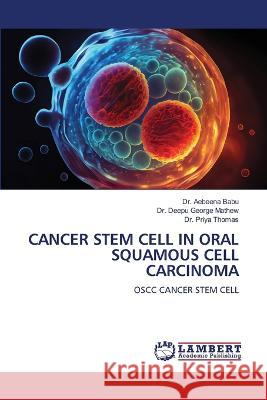CANCER STEM CELL IN ORAL SQUAMOUS CELL CARCINOMA » książka
CANCER STEM CELL IN ORAL SQUAMOUS CELL CARCINOMA
ISBN-13: 9786206161059 / Angielski / Miękka / 64 str.
Oral squamous cell carcinoma (OSCC) is the most commonly occurring oral malignancy. OSCC is a malignancy that arises in the squamous epithelium lining the oral cavity. The risk factors for the development of OSCC include tobacco exposure, alcohol consumption, and infection with oncogenic viruses such as HPV (Human Papilloma Virus). In India, OSCC is the third most common cancer. Among males it is the first most common cancer. Among females, it has a poor prognosis. The tumor can invade deeply into adjacent tissues of the tongue as well as into the bones, primarily of the alveolar crest. Microscopically, OSCC usually shows variable degrees of keratinization, cellular and nuclear pleomorphism, and mitotic activity. They are histologically graded as well, moderately or poorly differentiated (grades 1 to 3) according to WHO criteria. The tumor's progression depends on its clinical size and site, histologic malignant grade, perineural spread at the invasive front, lympho vascular invasion, and tumor thickness.











